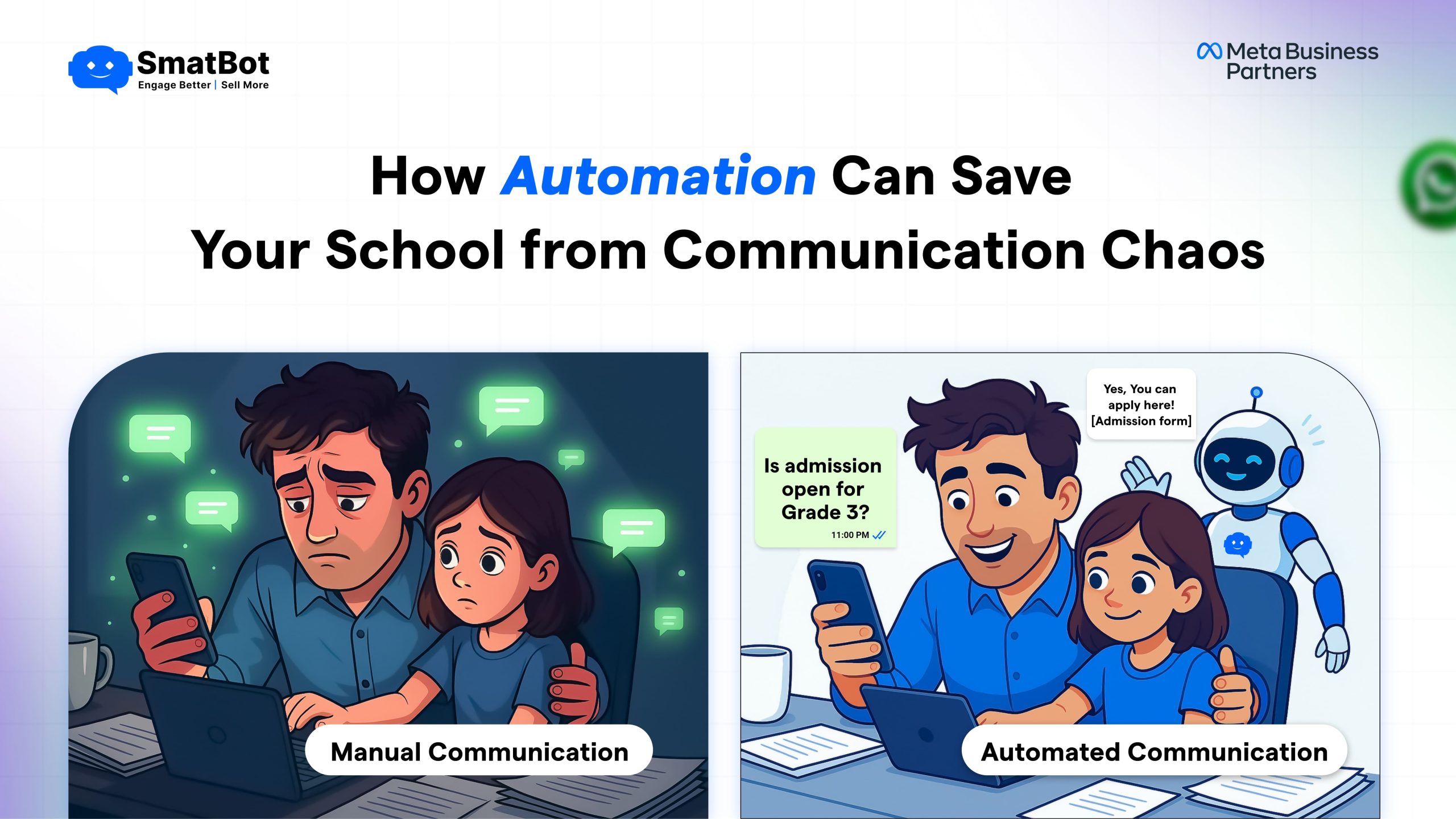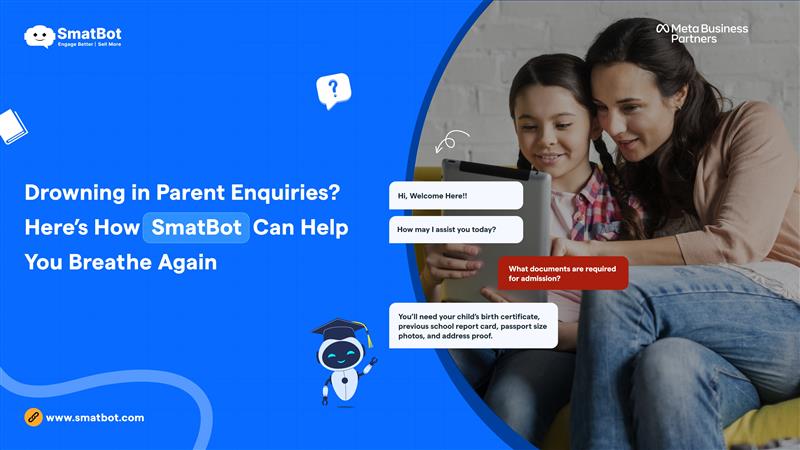How to Send WhatsApp Messages From Google Sheets Using WhatsApp API?
WhatsApp and Google Sheets are the most common platforms we generally encounter in our official works.
What if we can get an opportunity to integrate both WhatsApp messages and Google Sheets? It’s something most brands are looking for.
In short, WhatsApp Business API is hosted by BSPs, and Meta hosts cloud API, and no hosting charges will incur to the businesses for cloud API.
Now let’s discuss how to send WhatsApp messages from Google sheets using WhatsApp business API.
Before that, you must first know about-
What is WhatsApp Business API, and How is it Useful for Businesses?
The WhatsApp Business API is a platform that enables you to create apps that integrate with the most common messaging service.
Using WhatsApp Business API, you can completely utilize the potential of WhatsApp, including creating and sending messages, making calls, managing groups, etc.
The WhatsApp Business API empowers businesses with powerful tools to create customer assistance applications and automated message systems.
Besides that, you can even use WhatsApp business API to build custom applications for various purposes.
For instance, you can create an application that lets customers book appointments or reservations instantly through WhatsApp messenger.
You also have an option to create an application that assists people in staying connected with their friends, families, and even businesses while traveling.
The way you can use the WhatsApp Business API features abilities are endless. You need to be creative and have basic coding knowledge to create an application of your choice and make your customers interact with you easily.
So why not try to explore more and advance your creativity?
Let’s start with the process!
The WhatsApp Business API enables you to send and receive WhatsApp messages through Google Sheets.
Here are the steps to start with it:
- Firstly, you must create a new Google sheet. You can perform this by visiting https://sheets.google.com and clicking on the “Create” button.
- After that, you must set up the WhatsApp business API. To carry out this, visit https://www.whatsapp.com/business/api and click on the “Get started” button.
- Before that, you must have registered with WhatsApp business API with any BSPs or go with cloud API. Once you have organized the API set-up, you can send and receive WhatsApp messages using your Google sheet. To do this, open your Google sheet and click on the “Actions” menu. Then, select the “Send a Message” option.
- Enter the contact number of the recipient you want to send a message to in the ” To” field and type the message in the “Message” field. Then, click on the “Send” button.
- When a message is sent, you will get a notification of a confirmation message on your Google Sheet. You also have an option to check your send and receive messages by clicking on the ” Messages” tab.
Let’s know in detail-
How to Send Messages From Google Sheets Using the WhatsApp Business API?
Previously, there was no option to integrate WhatsApp with other apps. However, the WhatsApp Business API enables developers to send messages from their apps, such as Google Sheets.
You can perform this using the web interface or the WhatsApp desktop app. The WhatsApp Business API is in beta and is accessible only to businesses verified by WhatsApp.
To start and leverage the API features, businesses must first create a business profile and enroll their phone number with Whatsapp. If you have an existing WhatsApp business account, you can migrate it to WhatsApp business API by following these steps.
Once enrolled, businesses can send messages to any phone number related to a WhatsApp account.
Whatsapp business API advanced features allow businesses to provide a personalized experience to even a large set of audiences in fewer efforts.
Moreover, it enables businesses to automate their customer service functions. Ultimately, it empowers businesses with the ability to track the delivery and read the status of their messages.
The Whatsapp Business API is a powerful tool that you can utilize to communicate with prospects and customers alike.
Here’s How You Can Use WhatsApp Business API with Google Apps Script to Send WhatsApp Messages from Google Sheets.
The same strategy (as stated above) you can use to send WhatsApp messages from Google Form whenever new form submissions are received.
Step 1. Create a WhatsApp App
To carry out this, Go to developers.facebook.com and click the “Create App” option to create a new app. This app we will use for sending WhatsApp messages.
Next, Select the app type as Business.
Descriptively name your app and must not use any Facebook trademarks like Facebook or WhatsApp in the app name. And then, click on the “Create App” option to create an app.
After creating an app, click the WhatsApp button on the subsequent screen to add WhatsApp sending abilities to your app.
On the subsequent screen, you need to link your WhatsApp account to your Facebook business account. You can also create a new business account if you don’t have one.
Step 2: Add Recipient’s Phone Number
Facebook gives you a test WhatsApp phone number that will act as the default sending address of your app. You have an option to add up to 5 phone numbers of the recipients during the development period for free.
Also, your WhatsApp app will give you temporary access token valid for about 23 hours, and you must save this token for the later step.
Then, click on the recipient number dropdown to add five different WhatsApp numbers to your app. After that, you will get a verification code on the added numbers, and you can send WhatsApp messages to only those numbers you have received the verification code.
Step 3: Create WhatsApp Message Template
In WhatsApp Manager, Go to Account Tools, Message Templates, and create a new WhatsApp message template.
For instance, we will select the category as Account Update and assign a unique name for your message template.
For languages, we will choose English, for which the ‘en’ is the code language. If you want to use another coding language to send messages, you need to select the code of that language.
Write the Personalized Message
In the personalized message, you need to use the variable parameters in the message, and that will get replaced with the actual values from the Google Sheet. It is similar to automakers that you use inside Mail Merge and Document Studio, with a little difference that these are positional markers, not the named markers.
For example, in the below message template where variables {{1}} and {{2}} are for customer name and item name, respectively.
You must wait a minute to get approval for your new message template.
Step 4: Send WhatsApp Messages
All the necessary configuration on WhatsApp or Facebook is now complete with the above steps. Now, let’s start with Google Sheet, which sends these personalized WhatsApp messages in an automated manner.
After that, enter the phone numbers, along with the country code, in the phone number column of the Google sheet.
In the previous step, you must add numbers verified with the test WhatsApp account.
Next, go to the extension menu and choose Apps Script to open their underlying script. Replace WHATSAPP_ACCESS_TOKEN and WHATSAPP_TEMPLATE_NAME with the values copied in the above steps.
Click on the Run button under the App Script editor, which should immediately send the WhatsApp message to your recorded phone numbers.
And what you have below is the WhatsApp message you sent by the WhatsApp API by replacing the variable markers with actual values from Google Sheets.
More Tips and Tricks for Using the WhatsApp API.
You can use WhatsApp Business API to make the most of it by adding additional features to your WhatsApp chatbot.
For example, you can use custom templates to send structured messages. Or you can use the built-in location sharing feature to give directions to your customers.
Here are the tips and tricks that you must keep in mind while using Whatsapp business API for your business.
- WhatsApp often updates its template library. Ensure to keep message templates updated. otherwise, your messages will not get delivered.
- Always include a Call-To-Action (CTA) option on your messages to encourage your customers to take certain actions. For example, the actions include- clicking on a business website or calling your business.
- Always use rich media such as images, GIFs, videos, and documents to improve your messages and make them more engaging.
By keeping these tips and tricks in mind, you can leverage the maximum from the WhatsApp API and create a WhatsApp chatbot that provides a great experience for your customers.
Conclusion :
Sending WhatsApp Messages from Google Sheets using the WhatsApp Business API is not a daunting task.
Want to start? But don’t know where to, our SmatBot team is here to assist you
Using our in-built, easy-to-use Google Sheets add-on. You can send and receive WhatsApp messages right from your Google Sheet.
You can even try SmatBot’s 14-day free trial to understand how we can help you achieve your goals. What are you waiting for? We are here to assist you round the clock.




